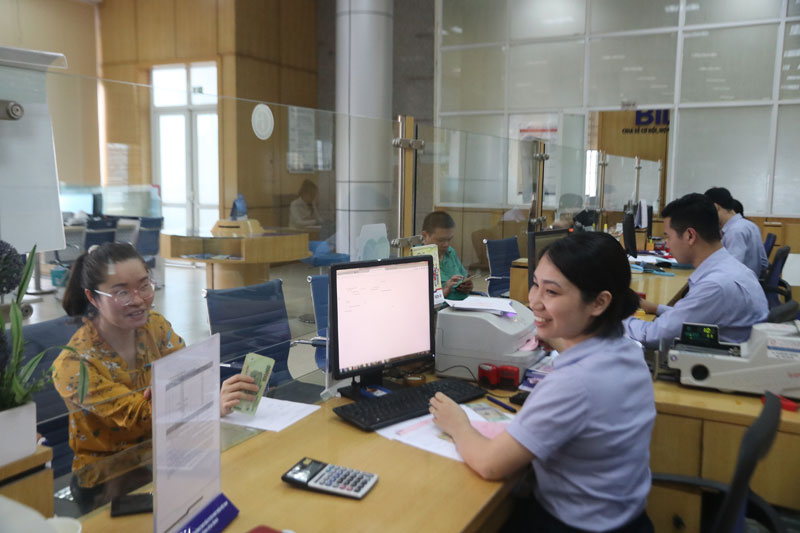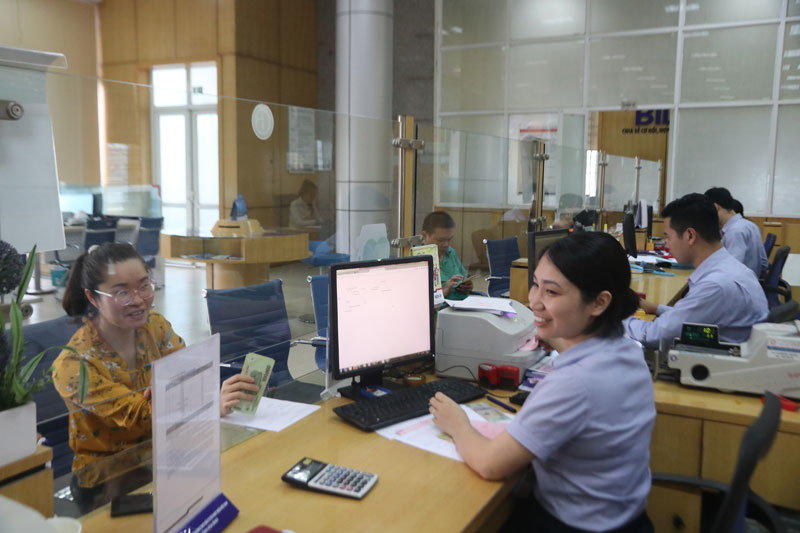
(HBO) – The total outstanding loans of banks and credit institutions in the northern province of Hoa Binh reached over 21 trillion VND (907.8 million USD) at the end of 2018, a year-on-year rise of 12.46 percent, according to the State Bank of Vietnam’s local branch. Of which, the short-term outstanding loans were 8.63 trillion VND, making up 41 percent; middle and long-term ones, over 12.4 trillion VND, accounting for 59 percent.
The Hoa Binh branch of the joint Stock Commercial Bank for
Investment and Development of Vietnam (BIDV) offers production loans for many
enterprises and business households in the locality.
The interest rate for short-term production and
business loans of commercial banks ranged from 6.5 percent to 10 percent per
year (normally 8.5-9 percent per year), while middle- and long-term ones
10.5-11.5 percent per year.
People’s credit funds applied the interest rate
of between 10.8 percent and 12 percent per year for short-term loans, and
10.8-13.2 percent per year for medium- and long- term ones.
That for consumer loans of commercial banks and
people’s credit funds stood at 11 percent and 12-13.2 percent per year,
respectively.
Banks and credit institutions offered over 12
trillion VND in loans for the agricultural and rural sector, making up 62
percent of the total outstanding loans, up nearly 13 percent versus 2017.
Loans for small and medium-sized enterprises (SMEs) accounted for over 20
percent of total outstanding loans. The outstanding loans for industry, export,
high-tech and clean agriculture remained low./.
According to data from the Hoa Binh Provincial Party Committee, the industrial production index for the first six months of 2025 is estimated to have increased by 20% compared to the same period last year. This marks the highest year-on-year growth rate for this period since 2020.
In the first six months of 2025, Hoa Binh province’s export turnover was estimated at 1.145 billion USD, marking an 18.11% increase compared to the same period in 2024. Import turnover was estimated at $ 804 million, a 17.15% increase, which helped the province maintain a positive trade balance.
The lives of the ethnic minority farmers in Tan Lac district have gradually improved thanks to the new directions in agricultural production. This is a testament to the collective strength fostered through the professional associations and groups implemented by various levels of the district’s Farmers’ Union.
With the motto the "product quality comes first,” after nearly one year of establishment and operation, Muong village’s Clean Food Agricultural and Commercial Cooperative, located in Cau Hamlet, Hung Son Commune (Kim Boi district), has launched reputable, high-quality agricultural products to the market that are well-received by consumers. The products such as Muong village’s pork sausage, salt-cured chicken, and salt-cured pork hocks have gradually carved out a place in the market and they are on the path to obtaining the OCOP certification.
In the past, the phrase "bumper harvest, rock-bottom prices" was a familiar refrain for Vietnamese farmers engaged in fragmented, small-scale agriculture. But today, a new spirit is emerging across rural areas of Hoa Binh province - one of collaboration, organisation, and collective economic models that provide a stable foundation for production.
Maintaining growing area codes and packing facility codes in accordance with regulations is a mandatory requirement for agricultural products to be eligible for export. Recently, the Department of Agriculture and Environment of Hoa Binh province has intensified technical supervision of designated farming areas and packing facilities to safeguard the "green passport" that enables its products to access international markets.



